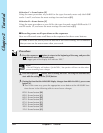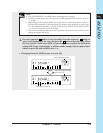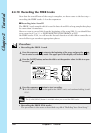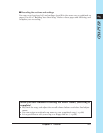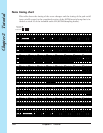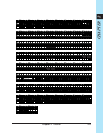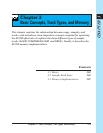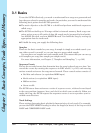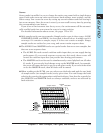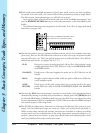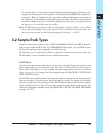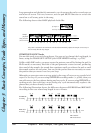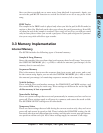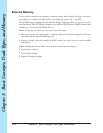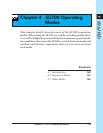
Chapter 3 Basic Concepts, Track Types, and Memory
132 Chapter 3
Basic Concepts, Track Types, and Memory
3.1 Basics
To use the SU700 effectively, you need to understand how songs are generated and
how they are related to samples and tracks. In particular, you need to understand the
following basic points about SU700 operation.
◆ The main objective at the SU700 is to build and perform multitrack sequences
called songs.
◆ The SU700 can hold up to 20 songs within its internal memory. Each song com-
prises action on up to 42 tracks of data: 40 sample tracks (arranged in four banks),
one AUDIO IN track, and one MASTER track. You build the song by setting up
appropriate data for each track.
◆ To build the song, you supply the following data.
Samples
These are the basic sounds for your song. A sample is simply a recorded sound—you
can either record it yourself, or you can import a prerecorded sample.
You can place one sample onto each sample track. This means that you can use up
to 40 samples per song (one sample per sample track).
For more information, see Chapter 5, “Samples and Sampling.” (→ p.149)
Sequence Events
The are the recorded events that determine how the song is played out over time. You
record the events by running the sequencer in REC mode (→ p.143) and entering
various control actions as the song moves forward. These control actions consist of:
●
Pad hits and releases (or equivalent MIDI input)
●
Knob actions (or equivalent MIDI input)
●
Ribbon actions
●
Scene recalls
The SU700 stores these actions as a series of sequence events, with each event keyed
to the song position (measure, beat, and clock) at which you recorded it. When you
replay the song, the SU700 repeats the sequence events so as to reproduce your re-
corded control actions.
Track Settings
These settings determine basic playback characteristics of each track. For example,
you use the LOOP LENGTH setting to select the length (in beats) of the loop on each
LOOP and COMPOSED LOOP track.



